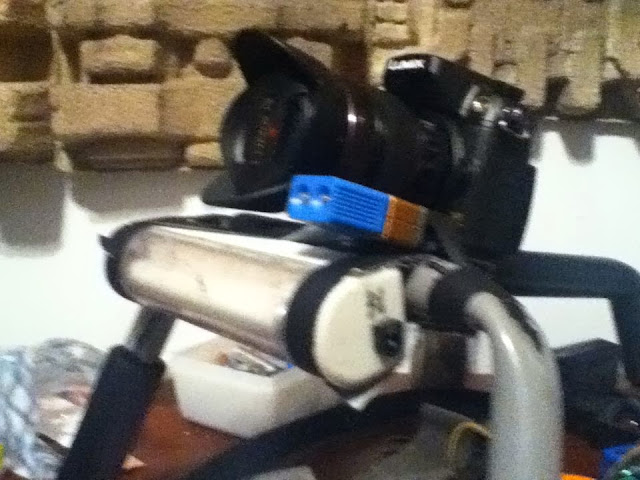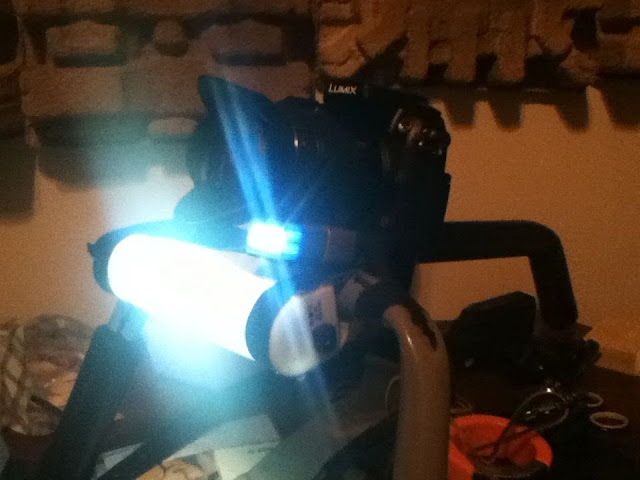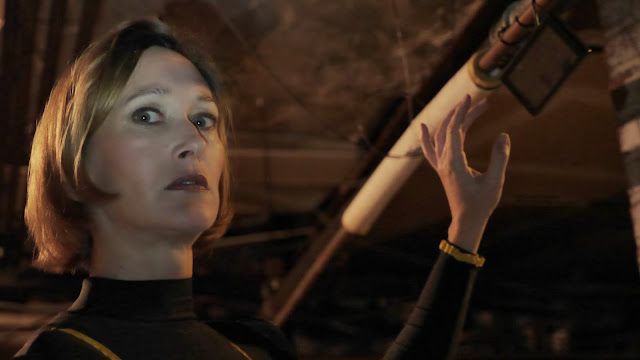So. Front-light. I've seen behind-the-scenes where someone is throwing an inky on actors -- you know, by hand. They're just carrying it around.
Well on this picture it's
written such that it's all POV camera. That's, er, not the way I'm shooting it but that's not the writer's fault.
In any case, I realized that the robot (whose POV we mostly are) has a light on in his eyes. So of course the
camera should have a light on board. Right?
 |
| Here's an iPhone picture of our camera rig -- that's a florescent light which operates on 4 AA cells, just below the lens; and a weird little 2-LED light which attaches to a 9V battery there next to the lens. |
Right.
So here's the thing. You always want to have your light "modeling" the foreground by having some big huge amount of light coming in from the back or side of the image. That helps keep the image from being too "flat" looking. But counter to that you want to fill in eye sockets and have a bit of kick from some light in the eyes. The fill is to make people look better, the kick is so you can see what they're thinking (no, really).
 |
| The lights turned on make the iPhone's camera go nuts. I kind of like it. |
Now you may have noticed these are two opposing things in light. And they can be a pain to make both work.
 |
| Un-color-corrected. |
Attaching a little light or two to the camera works fantastic. Especially at a 1600 ISO at f2.8. You can light from behind just like you want to, but you don't need to worry so much about the kick and filling in the eyes.
And it's a relatively subtle effect too. You don't have to worry about everything looking like a bad television documentary where they attached a SunGun to the camera and went walking around in people's backyards.
We may slap a light to the camera rig just below the lens on all future movies. We just may. It sure makes the lighting director's job easier. I mean the DP's job. I mean the gaffer's job. I mean the
Queen of Mars.























































